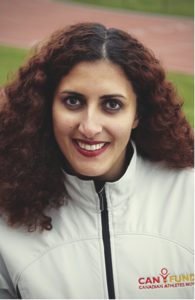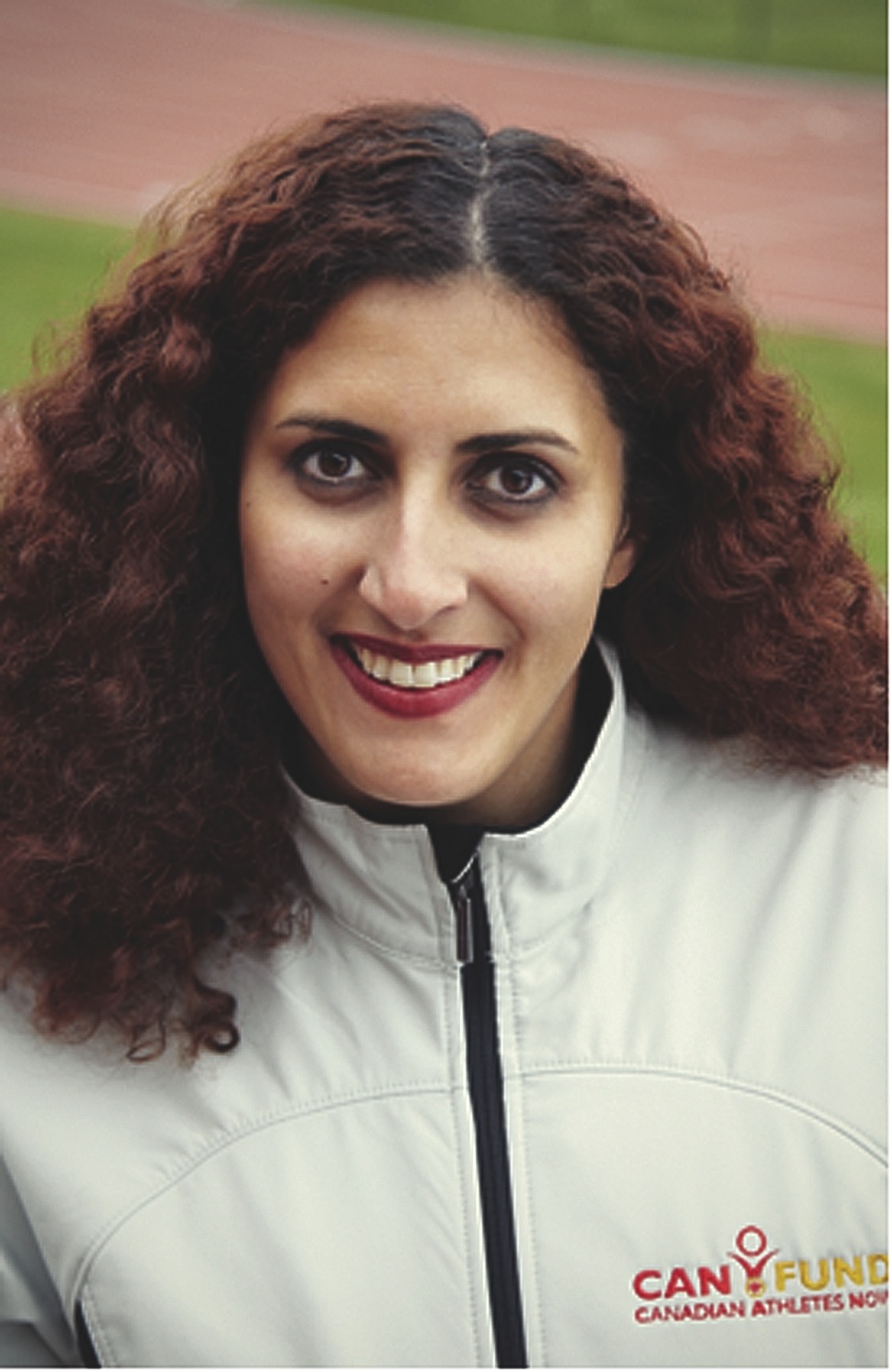Christian Quaresma
Contributor
Priscila Uppal recently became the first poet-in-residence for the Rogers Cup tennis tournament held at York’s own Rexall center. She is a Professor of creative writing and literature here at York, and Time Out London calls her “Canada’s coolest poet”. She was challenged with writing a poem for every day of the tournament, while keeping a daily blog, which can be found at lovemeansnothing.com. Uppal met this task by playing on the language of tennis, altering some well-known lyrics, and bridging art and sport in a way that is rarely done. For anyone curious about what’s happening in the world of poetry, Priscila is an excellent place to start. Her poems are current and less likely scare you away from verse than Tennyson. Here are some thoughts from the prolific writer.

Lets start with how you came across this opportunity— were you approached by the organizers of Rogers Cup?
Yes, I was approached by Tennis Canada, the organizers of the Roger’s Cup. They heard about my work during the Olympics and Paralympics, and Wimbledon had instituted a poet-in-residence in 2010, and so they phoned me and asked if I’d be interested in designing a position for myself as the first-ever poet-in-residence for the Roger’s Cup. I was delighted and jumped at the opportunity to do so, especially because the offer was an indication that my various initiatives undertaken over the last few years to bridge the worlds of sports and art were still gaining momentum.
Outside of being the poet-in-residence for the Winter Olympics, do you write sport poetry often/ever? When writing a tennis poem everyday, were you struggling for content, or did the words flow easily?
I rarely wrote sports poetry before, which is one of the reasons I proposed the Olympic gig. I was baffled by the fact that while my first love has always been art, my second love has been sport, and yet I rarely turned to sport for poetic inspiration. When I examined why this was the case, it had little to do with my passion and interest in sport but more to do with the bias against sport art (that it is a minor topic, a commercial topic, unworthy of serious contemplation or celebration). I am determined to present fun, inventive, and profound sports poetry to the general public as well as to serious readers of poetry to help break down these prejudices, stereotypes, and barriers. For me, this is especially important for children, as too often children think they need to choose a single identity between the athletic jock or the intellectual artsy. I want them to see that not only can they choose both, but there are advantages to choosing both and lots of creative and healthy energy in pursuing both or appreciating what both offer to our lives. If the sports world and the arts world came together more often, arguing together that we are both essential for a vibrant culture and for healthy and meaningful lives, we could make a lot more headway in our communities and could be a more powerful force in elections.
Because you were churning out poems so quickly, did you take on a different approach than if you were doing a piece with more time to revise? There was a pop culture element to some of the poems, especially music. Did this evolve out of your experience at Rexall and/or was it meant to lure in readers without previous interest in poetry?
When you’re writing every day on the spot, you need a few “tricks” in your poetry basket for sure. I have “types” of poems I know I can write, and keep them at hand; such as “odes,” for instance, which I like to write for the usually undervalued people or aspects of a sport. For the tennis gig, I wrote an “Ode to Ball Boys and Girls,” which was quite popular with fans, because once again, these are not the players who are usually our focus, so part of my job is to draw attention to the aspects of the game that are generally overlooked. I also know that I can choose a standard aspect of the game and tackle it from a new angle. So, for instance, I wrote “Three Views of a Baseline Rally,” which compared the ubiquitous baseline rally to arm wrestling, tug of war, and lastly chess. The pop cultural element is a good way to help bridge the gap between audiences that are familiar with written poetry and those who are not, or have not read poetry in years. However, I don’t want you to think that it’s such a deliberate, conscious strategy all the time. I used the Beyoncé song as a foundation for the opening poem because as I was contemplating different approaches to the tennis poetry, before the tournament began, I kept hearing the song and the main lyric “all the single ladies” had now shifted completely in my head to “all the singles ladies”–I was hearing it as an actual call to the women tennis players. Then I had fun thinking of how to change the other famous catchy line, “If you like then you better put a ring on it,” to “If you like it put a championship ring on it,” since it struck me as just an amazing and desirable event (well, actually, a much more desirable event, since I am someone who has refused the traditional institution of marriage) to be awarded a championship ring for one’s dominance in a sport rather than a ring of marriage. But you’re right that fans loved the poem, partly because it played off a pop culture reference they already knew, which makes the poetry less intimidating and more welcoming right off the bat.
Then, for the final poem in honour of Serena William’s win, I included Air Supply song titles, because by the end of the tournament, when you’ve been to all the matches, you have a much better sense of the personalities of the players involved. In Serena’s case, I had also read her autobiography, On The Line, and reviewed it as part of my Art of Tennis blog (in addition to the daily poems, which can still be found on rogerscup.com under poet’s corner, I also wrote a daily article, which is also still on the website, about tennis art–a tennis book or film or song), so I knew that Serena loves karaoke singing, and she said at the end of one of her matches that she was in an 80s moment and singing a lot of Air Supply. So, after her win, during her press conference, when I asked her what word she wanted me to use in the poem I was going to write in her honour, and she replied, “gnarly,” which is a great 80s word, the karaoke theme and the air supply lyrics, which are all about love (such a fun word to work with in tennis), all came together to me for the final poem.
What’s amazing to me is that I never tired of writing about tennis for this position, and that I still have many ideas for tennis poems that I want to write. I believe firmly that in order to stay fresh and vibrant and inventive as an artist, it is essential to challenge one’s self and to branch out into new areas once in a while. I also believe you can’t just sit around and hope to find inspiration. You need to go out and find inspiration. And I’m a very prolific poet, so I think the evidence is there.
Are you planning on getting these poems published in book form?
Yes, a chapbook off all the poems, plus a couple of other poems I wrote but did not publish during the tournament due to lack of space or time to complete the poems, plus the contest winners, will be printed and sent to all the participating athletes plus donors of the tournament. However, the poems will also eventually be included in the companion volume to Winter Sport: Poems (Mansfield Press, 2010), Summer Sport: Poems, to be published in the spring of 2013 once I resume and complete my next gig as poet-in-residence for Canadian Athletes Now for the 2012 London Olympics and Paralympics. I think I’ll have a whole section just on the tennis poems, called Tennis Anyone.
How did you feel about the poems submitted for your contest?
I was delighted to see so many fans of tennis and aspiring as well as accomplished poets submitting to the contest. And I enjoyed reading all the poems, everything from haikus, to fun rhyming verse, to sonnets, to serious meditations on the meaning of tennis, to memory poems. The range of possibility of sport art was reflected in the variety of verse submitted. I think this could end up being a very popular feature of other events, to run poetry contests; it’s a fun and currently novel way to engage fans, and all of the winners were just thrilled to be posted on the website where other fans, and the players themselves, could read the work.
What will you be working on next?
Yes, always what’s next. I’ve just finished a gig as guest editor of The Best Canadian Poetry anthology, where I read all the poetry published in Canada in over 75 journals and magazines to select a top 50 to be published in book form. The book will be launched in early October (we will have an event at York on Monday Oct 31st noon-2pm for it). I’ve also just completed a memoir about finding my runaway mother in Brazil. And I’m in the middle of working on two plays with legendary dramaturge Iris Turcott. I’m also in the process of revising a new poetry manuscript. All this, and prep for London 2012. And continuing to train to keep beating my 5km running time (which stands at 23:23). So, you could say I’m pretty busy!
Check out Uppal’s poetry here.


